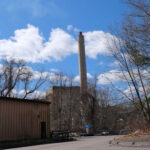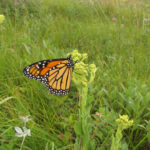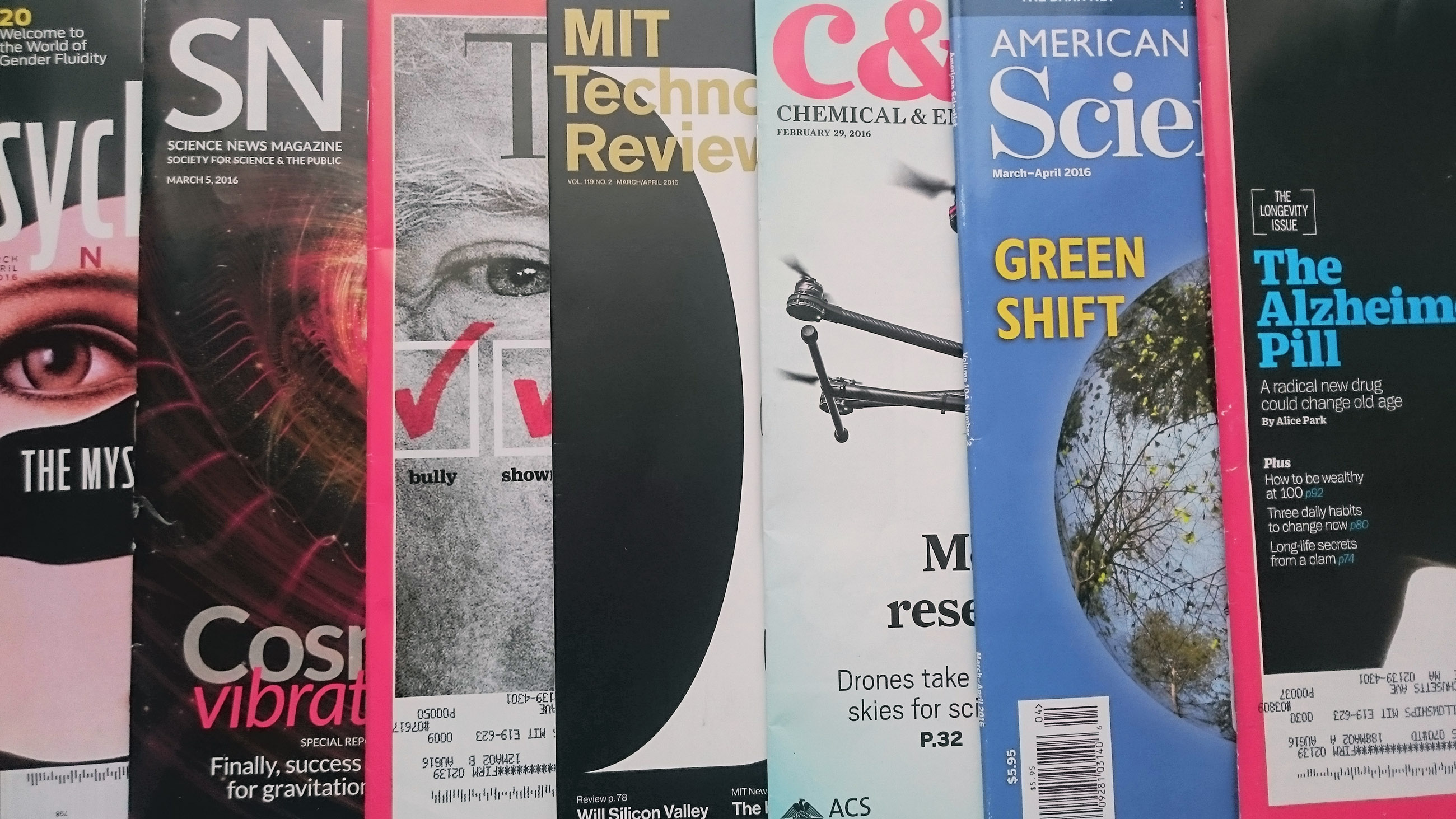As you may have heard, there’s a big vote coming up, the outcome of which will shape the future of this grand experiment we’re engaged in. On one side is a group of people who feel they’ve been disrespected and condescended to by “elites.” Instead of working toward actual solutions, their leaders are using extremist rhetoric and broad, unsubstantiated claims to fuel their calls for a revolution. On the other side are proponents of the status quo, including virtually all elected representatives. They argue that while there are things that need to be fixed in our current system, signing up for radical change would recklessly endanger the very institution that binds us together.
I am talking, of course, about the vote that will take place this Saturday in San Antonio on whether to amend the National Association of Science Writers’ constitution to allow those working in public relations to lead the group. If you’re reading this column, you’re likely already aware of how contentious and vitriolic this debate has become.
Discussion of the vote’s repercussions have focused largely on its potential effects on the group’s makeup: In a survey that was conducted as part of an NASW ad-hoc committee’s report on the amendment, close to 10 percent of responding NASW members said they would resign if the amendment passed and around 5 percent said they would leave if it did not. (Because the first group is disproportionately made up of high-profile journalists, there is concern that that a first wave of departures could lead to a much more significant exodus. NASW has more than 2,500 members and a little more than a quarter of them responded to the survey. Of that group, 39 percent labeled themselves as only journalists, 17 percent labeled themselves as only PIOs, and 22 percent classified themselves as “other.”)
I take concerns about NASW’s membership seriously. (Full disclosure: I’ve belonged to NASW since 2011 and have been an elected member of NASW’s 15-person board since 2014, well before I began writing the Tracker. This column is a reflection of my personal views and not those of the board.) But I would adamantly oppose this amendment even if it had no effect on membership at all. Its passage would threaten the group’s ability to fulfill our primary and stated purpose, which is “to foster the dissemination of accurate information regarding science and technology … in keeping with the highest standards of journalism.”

COUNTERPOINT: Rick Borchelt, a public information officer with the Department of Energy, explains why he believes the National Association of Science Writers should end what he calls a “caste system.”
To understand how we got here, it’s helpful to know a little about NASW’s history. It stretches back to 1934, when a dozen science reporters launched the group at a meeting in New York. Over the past 82 years, as the role and meaning of science journalism have changed multiple times, NASW has changed along with it. In the 1930s, the group viewed reporting on science and promoting its appreciation as inextricably linked. In the 1940s, as science boomed and became increasingly specialized, science reporters took on an increased role in science popularization. By the time NASW was incorporated in 1955, there were two different categories of members: one for journalists and one for other types of science writers, including public information officers, academics, and educators.
This type of multi-tiered membership is not unusual among journalism organizations: The American Medical Writers Association and the Society of Environmental Journalists, among many other groups, function in that manner. But by the 1990s, an increasingly vocal group of PIOs within NASW viewed that arrangement as unfair — or even discriminatory. In 1998, after a debate that threatened to rip the group apart, NASW abolished different types of membership and allowed any member, regardless of professional status, to run for a seat on its board.
But one distinction remained. A “substantial majority” of the work of the four board members who also served as NASW officers (president, vice president, treasurer, and secretary) had to be journalistic in nature. In many ways, the effects of this requirement are more cosmetic than concrete. The fact that NASW’s officers are journalists has no effect on the makeup of the board or on the group’s priorities or decisions. NASW officers’ votes do not count any more than those of the rest of the board. The president does not set the agenda for meetings, the secretary does not decide what gets entered into the official record, and the treasurer does not make decisions about our budget.
In fact, virtually the only time officers are called on to fill a meaningful role is when they need to serve as the public face or speak on behalf of the organization. That reality has left me nonplussed by some of the rhetoric coming from the amendment’s supporters. Karl Bates, Duke University’s director of research communications, has compared NASW’s current arrangement to the apartheid policies that maintained white minority rule in South Africa in a message board post restricted to NASW members. Rick Borchelt, the head of the Office for Communication and Public Affairs at the Department of Energy and the amendment’s sponsor, likened journalists opposed to his campaign to extremists opposing gay rights and said that the treatment of PIOs is akin to the unconstitutional racial profiling caused by the New York Police Department’s stop-and-frisk policy.
Those parallels would be comical if they weren’t so offensive, as would the paranoid claims that opposition to the amendment is the result of a belief among journalists that PIOs are unethical. I’ve spoken to more than three dozen people, both in my capacity as an NASW board member and while reporting for this column, and I haven’t found a single journalist who believes that to be true. What is true is that journalists and PIOs have different roles and responsibilities — and that those responsibilities affect the ways in which we are able to speak out in public.
Eight years ago, when President Obama came into office, he vowed there would be unprecedented transparency across all departments of the federal government. In reality, as journalists are all too aware, the Obama administration has been among the most secretive in history. In September, the president of the Society of Professional Journalists sent a letter to the White House, “to express deep concern about, and urge greater openness and transparency from, the federal government.”
More than 40 other groups signed on to the letter — including NASW. Lending our name to the cause of the free flow of information was one of the easiest decisions the board has made during my tenure. Along with mentorship and support for those at the start of their careers, this type of advocacy is among the most important functions professional journalism societies can serve.
It is also this type of work that would be threatened if NASW voted to change its constitution. Imagine, for instance, a scenario where the association’s president is employed by a federal agency that is refusing to release information to the public. It wouldn’t be fair to ask that person sign a letter protesting a policy she was also responsible for enforcing, just as it wouldn’t be fair to open NASW to charges of outside influence if its board chose not to protest the decision. (This is not far-fetched: In 2009, a freelancer filed a lawsuit against Borchelt’s employer, the Department of Energy, because of its refusal to comply with her Freedom of Information Act request. The reporter was seeking documents related to the department’s investigation of fraud allegations at one of Borchelt’s previous employers, the Oak Ridge National Laboratory.)
In an era in which writers at all stages of their careers are supporting themselves through a portfolio of jobs and assignments, I believe NASW’s big-tent approach is a source of strength. The discussions leading up to Saturday’s vote have made it clear that PIOs feel unrecognized and underappreciated. That is a problem that requires actual change. A move that could devastate the association’s ranks and undermine its ability to act publicly is not the way to go.











Comments are automatically closed one year after article publication. Archived comments are below.
This may provide some insight into this discussion. I am an academic who conducted a national survey of science writers last year about their sometimes-contentious relationship with the government agency PIOs they deal with. The research was sponsored by the Society of Professional Journalists and the Center for Science and Democracy at the Union of Concerned Scientists. A report can be found at: http://spj.org/pdf/foi/science-writers-survey-report.pdf
Thanks a million for this; yes, quite the topical report. Am heartened that science reporters and science PIOs seem to have significantly better working relationships than journalists covering other beats, for which I suspect NASW and its camaraderie/collegiality may be in part responsible.
From your experience with compiling these data, was there a significant difference between respondents between journalists covering regulatory agencies (FDA, CDC, EPA, etc) vs granting/funding agencies (NSF, DOE/Science)?
I note particularly the following from your report:
>>In nearly every case, the results from the science writers’ survey were significantly less severe than
results from the federal reporters’ survey in 2012 and in many cases from the education writers and
local reporters’ surveys in 2014.
For the question “I am required to obtain approval from the public information office before
interviewing employees,” 54 percent of science writers said this happened most or all of the time, which
was on par with the answers from local reporters (52.8%) and education writers (55.5%), but
significantly lower than the federal reporters’ answers (78%).
Almost half of science writers said they had been prevented from interviewing agency employees in a
timely manner at least some of the time (46.1%), which was significantly more than education writers,
when 32.6 percent said they had been prohibited from interviewing at least some of the time, but was
significantly less than the federal reporters, when 69 percent reported having been prohibited from
interviewing at least some of the time. It was on par with local reporters, where 51.4 percent said they
were blocked from interviews at least some of the time.
Science writers were by far the least likely to complain about their requests for interviews being
selectively routed by PIOs to other agency employees. Just 18.4 percent of science writers said this
happened most or all of the time, which is significantly less than the 67 percent of federal agency
reporters and 37.2 percent of education writers and 30.5 percent of local reporters.
Monitoring is common throughout, apparently, with more than half of local reporters (53%) and science
writers (57.8%) reporting it happens at least some of the time. But for federal agency reporters (84%)
and education writers (71.1%), it is significantly more likely to happen at least some of the time.
The federal reporters also were significantly less likely to answer all or most of the time when asked if
PIOs responded to requests for interviews or information in a timely manner (37%) compared with
science writers (56.5%) or local reporters (51.8%) or education writers (52.5%).
Science writers are the most successful at getting interviews without involving the public information
office, with 32.2 percent saying they can do that most or all of the time. That’s significantly more than
the 17.6 percent of local reporters, 21.3 percent of education writers and 15 percent of federal
reporters who say they can successfully interview subject matter experts without involving the public
information office.
But science writers are somewhat less likely to report a positive working relationship with PIOs that
helps them get in touch with the subject matter experts they need to speak with. Only 63.8 percent
agreed that they had a positive relationship with the PIOs, which was significantly less than the 73.3
percent of local reporters who agreed and the 78.8 percent of education writers who agreed. Their
answers were on par with but slightly below the 70 percent of federal agency reporters who agreed that
they had a positive relationship with the PIOs.
Finally, science writers were the least concerned about the public not getting the information it needs
because of barriers that agencies are imposing on journalists’ reporting practices. Only 56.8 percent
agreed with that statement, which was significantly less than the 76.1 percent for education writers,
77.7 percent for local reporters and 85 percent for federal agency reporters.,<<
Rick,
Most of the reporters surveyed covered multiple agencies and they gave us a list of those agencies at one point. But the questions usually asked them focus on the agency they covered the most, and they didn’t always identify which agency they were thinking about when they answered the specific question. So the survey wasn’t set up to judge the PIO performance by agency. To do that, I think we would have had to have a much bigger sample and to word the questions differently.
Dr. Carlson
I resigned years ago from NASW after it became clear to me that the organization is more about PR than journalism. Just to be clear: flacks are not journalists. Period. They are paid to promote corporate interests. We journalists are paid to uncover, not cover-up. The real journalists should start our own group and not continue to provide cover for corporate malarky.
I appreciated “Anonymous”‘s comments and agree with Harvey’s comment, “I would suggest that most PIOs of scientific societies and academic institutions do not consider themselves as ‘working in public relations.’ They see themselves as communicating science, both to the media and, increasingly, directly to the general public. They are, in fact, science writers.” I joined NASW when working for a daily, international biotechnology publication after many years of working for a daily newspaper with degrees in biology and journalism (no public relations courses, for instance). Along with some of the changes Harvey describes, even after somewhat reluctantly and with mixed feelings moving from journalism to being a PIO, I was concerned about the purity of journalists’ objectivity when they were expected to blog (expressing a point-of-view) and tout their work in social media (marketing). My view about our membership is that either as “other” (the 22%) or PIOs or journalism instructors or staff writers or freelancers, we are all science communicators concerned with the quality of science communications.
What always struck me as unique about NASW was the fact that people from all sides of science communication could freely exchange ideas without being thought of as ‘outsiders’. It is indeed sad that the situation is so divisive that Seth compares it to the election.
I earnestly hope that instead of focusing on the whether the comparisons around societal discrimination are appropriate, we could talk about solutions. For my part let me present one – it may sound far-fetched and I fully expect it to be dismissed but nonetheless here it is.
I suggest that board members continue to have specific responsibilities but the hierarchy should change to a flat structure with everyone having the same title of ‘Member of the Board’. This would directly reflect the equal voting powers and all position statements would continue be approved by the entire board (as it is now). Should one of the members should recuse themselves on any issue for COI reasons the position of the board (and the perception by the outside world) would not change.
As a former freelancer/’other’ and current PIO who cares about accuracy in science communication, I very much appreciate the argument by Seth and others about perceptions. Even the mere hint of a COI could very well open the door to questions about the legitimacy of NASW’s position on an issue like FOIA. But I also do not understand how current PIO board members do not present the same problem.
Seth provides the hypothetical – “Imagine, for instance, a scenario where the association’s president is employed by a federal agency that is refusing to release information to the public. It wouldn’t be fair to ask that person sign a letter protesting a policy she was also responsible for enforcing”
Replace ‘president’ with ‘board member (with equal voting power)’ and the argument could still hold true. This is one issue being repeatedly raised (among others) that has not been satisfactorily addressed by Seth in this piece or others arguing against the amendment.
I also believe that NASW has a duty to serve PIO and non-PIO members equally. It does seem (though I speak without the benefit of being a long term member) that people like Rick have gone to great lengths just to have this issue recognized and bring it to a vote. I would not want that to go unrecognized. That being said, I would hate to see an exodus of good journalists and would consider voting down the amendment if I knew that the board publicly committed to a mutually acceptable resolution within a specific and reasonable time frame (6 months?). This issue cannot stay unresolved much longer.
I am a NASW member but neither journalist nor PIO. (I am the 22%.)
While I think there are good arguments to be made for both sides, I disagree with many of the arguments presented in this piece.
1. The piece discusses the history of two (or more) tiered memberships and note that these were not uncommon. If intended as an argument, this is meaningless; many terrible policies were historically — and unfortunately in the present — also not uncommon.
2. The piece emphasizes that officer positions are “largely cosmetic”. First, if this were genuinely cosmetic, then why go to the trouble of defending a need to exclude non-journalists from these positions? Second, assuming that this next part is the not “largely cosmetic” part: If “In fact, virtually the only time officers are called on to fill a meaningful role is when they need to serve as the public face or speak on behalf of the organization” is true, then these are PR roles and it seems to me somewhat ironic to exclude PR professionals from such a role.
Finally, regarding “What is true is that journalists and PIOs have different roles and responsibilities — and that those responsibilities affect the ways in which we are able to speak out in public.”. Different organizations expect different duties of their PIOs. Surely that decision could be left up to the individual PIO, and their individual organization, instead of having it made for them by people who are not PIOs. I am unaware of any blanket bans on such activity, but as I have said, I am not a PIO. They can chime in.
3. Regarding the tweets. I am a woman of color who works in science communications. While I do not support or approve of the tweets, I have observed biases in this conversation that come from perhaps the same place. For instance: “I’ve spoken to more than three dozen people, both in my capacity as an NASW board member and while reporting for this column, and I haven’t found a single journalist who believes [the paranoid claims that opposition to the amendment is the result of a belief among journalists that PIOs are unethical] to be true.” Were people OTHER than journalists spoken to? Did any of them, perhaps, believe it to be true? If other writers DID believe it to be true–well, they are not discussed here, but surely they have a reason. Where do these perceptions come from? Somewhere–unless they are all delusional, and I find that difficult to believe. You cannot learn about one population–one that is quite capable of having their own thoughts and speaking their own words–by only asking other populations about them. Surely that would not be acceptable in other contexts. Why is it okay here?
Of course journalists aren’t immune from conflicts of interest. But the conflict between PIO’s and journalists is baked in to our relationship. We may be equally good at what we do, but that does not make us equals.
I believe most PIOs share my values even though they are paid to represent their institutions, not to speak truth to power “in keeping with the highest standards of journalism,” as the NASW constitution puts it. I don’t want the president of my organization being the person who prevented me from speaking with a scientist at his/her institution.
If the vote to change the constitution succeeds, it will be a pyrrhic victory. PIO’s will not earn added respect from journalists by muscling through their amendment over the objections of this core group.
That’s why, when I led the last major change to the NASW constitution in 1989, I sought consensus, not conflict.
Sorry Richard, but despite the deep respect and admiration I hold for you, you’re wrong on this. The evidence lies with your choice of words, “PIO’s will not earn added respect from journalists by muscling through their amendment over the objections of this core group.” Explicit in your comment — “this core group” — is the suggestion that journalists are somehow more valuable to NASW than all others. How is bringing forth a constitutional amendment, as dictated by the organization, “muscling through their amendment?” Many, many PIOs began as journalists. We know the difference between the two roles. We also know our shared concerns outweigh our differences. Bringing equity to an organization and eliminating discrimination can only improve things in the future.
I have several times posted (on Facebook and NASW forums) the observation that it is unseemly for an organization to accept members from a certain group (e.g., PIOs) and charge them full dues and allow them to serve as Board members, but say they are inherently unqualified to serve as officers of that organization. I have seen no substantive response to that observation by opponents of the amendment.
The arguments against the amendment are based largely on presumptions about what people outside NASW might think if an officer were a PIO. Does taking the minutes of meetings or balancing checkbooks (among the duties of officers) weigh so heavily on public perceptions of our organization, and would these activities be compromised were a PIO to exercise them? I think not.
Incidentally, the article refers to “those working in public relations” as being the beneficiaries of the amendment. I would suggest that most PIOs of scientific societies and academic institutions do not consider themselves as “working in public relations.” They see themselves as communicating science, both to the media and, increasingly, directly to the general public. They are, in fact, science writers.
For the record, I joined NASW as a PIO in 1998 and have been a member as a freelancer since 2007.
I value Seth as a colleague and fellow NASW board member, so it is in that spirit that his rather recent knowledge of NASW can be forgiven for a number of mistakes about the history of the organization that should be corrected. One is that the 1998 vote to abolish the distinction between journalists (“active members”) and others (“associate members”) was the result of an outcry from PIOs. In fact it was a deliberate position supported by the officers and the board at the time and ratified by an overwhelming majority of NASW members who voted. And “associate members” — PIOs and freelancers whose sole gig is not traditional journalism — had seats on the board long before that vote: I know, I was one of them. There is an eloquent plea from then-president Richard Harris in back issues of ScienceWriters urging the membership to support ending the dual-class citizenship because it better reflected who the organization was in 1998 (about a quarter journalists at that time, and steadily dropping through the subsequent two decades), and also because it was the right thing to do.
Seth might also not know that for three years I, and I alone — despite my clear inadequacies as a shill for the federal government and dodgy ethics as a PIO — comprised the entirety of NASW’s Information Access committee, identifying issues on which we should weigh in, reviewing requests for letters of support by journalism and free government organizations to sign on to issues letters about government stonewalling, and even writing the letters of support by NASW when the officers and board approved. Yes, that’s right — I acted for the good of NASW and against the clear desires of the administration in which I serve. Imagine that. And imagine that many of us who currently aren’t journalists could be equally impartial. I also helped organized National Press Club events on lack of transparency in the federal government, identified and coached scientists who could attest that they had been muzzled, and otherwise made myself more of a gadfly on government transparency than just about any other NASW member.
Seth may well find the analogy of NASW’s current separate-but-equal status to other forms of societal discrimination comical. I find the analogy — and intended it — to be supremely uncomfortable, in that the the spirit of animus that drives wedges between the disenfranchised and the empowered is an absolute, not a matter of degree or social circumstance. That Seth thinks I believe full professional access to the institutional elite of NASW is as important as gay rights or ethnic profiling — well, now that’s comical. Nor do I believe the same people who think PIOs are best kept in their place and out of sight at NASW for fear of tainting our public persona are racist, homophobic, or bigoted. It’s that they should feel the same uncomfortableness with exclusion without just cause no matter where they confront it.
“What, in our own house!” laments Lady Macbeth on hearing news of the murder of the King. “Too cruel anywhere,” is Banquo’s retort.
Three things.
1: Most important: the only person I’ve read that asserts that PIOs are ethically challenged is you — when you claim that journalists believe that of PIOs.
That’s a fundamentally dishonest rhetorical trick, IMHO. The issue here is if PIOs and reporters do different jobs — which they plainly do — and what that therefore means to an organization whose foundational purpose is the support of journalism. To assert that making a distinction between those two plainly different jobs is the same thing as saying one of those jobs is inherently compromised makes your persuasive task easier, I suppose, but it it explicitly weakens your case.
2: The ugly false equivalence between an argument about the qualifications for office in a professional organization and bigotry and societal discrimination does not argue well for your ability to represent journalism as a craft. To say, in effect, “just kidding” — that you didn’t mean they were literally equivalent, though that’s the plain meaning of your prior words, just that you want to make your opponents uncomfortable, reads less like an explanation and more like a dodging of responsibility for your own wild rhetoric.
3: And again, I note the core of deliberate misrepresentation within your claim that such equivalence might be valid: the issue is not between disenfranchised and empowered, as you actually clearly know. Last time I checked, every member of the NASW gets to vote. Those for whom journalism is not the preponderance of their current work are barred from four offices w/in the organization whose primary function is to be the public face of the organization. As Seth documented and you do not dispute, those officers don’t set policy independently of the board, on which PIOs — you! — serve; they do not set budget; they are not “empowered” over any other board member.
I get that you don’t like that. But to claim this is an issue of discrimination on a par with racism or anti-gay bigotry shows either or both (a) deep and irresponsible ignorance of those vicious historical circumstances, and (b) a reckless willingness to splatter bullshit. Either way, not a strong defense of a view that needs it, given the real risks it poses to the NASW were it to prevail.
Finally, to point out one last flaw in your comment: anecdotes are not arguments. That you were, by your own account, able to resist or ignore potential conflicts of interest between your day job and your role in professional organization means only that you are so enabled. But the issue isn’t whether you could discharge an officer’s duties appropriately. It’s whether the organization should accept such potential conflicts over time, across the entire population within the organization. Saying “I’m good” doesn’t address that issue.
What confuses me about the conflict of interest argument is that it seems to presuppose that journalists are immune from conflicts of interest. What if NASW wanted to make a public statement about, say, a businessman’s buying a major newspaper and using it as a weapon against his enemies (http://www.nytimes.com/2016/01/03/business/media/sheldon-adelsonspurchase-of-las-vegas-paper-seen-as-a-power-play.html)–and what if our president worked for that newspaper? In either this or the federal agency scenario, the entire board makes the decision, and the president could recuse her or himself from signing–or even step down–in light of their COI. Much as I recognize and value the importance of journalistic independence, we all work for organizations with interests, like staying in business.
Neither Seth nor any other concerned journalist (myself included) is saying that that journalists are magically immune from potential conflicts of interest. In fact, we contend with such potential conflicts on a regular basis in our work. (The New York Times has a very long set of policies about avoiding such conflicts.) To cast journalists in this unrealistic light distracts from the issues under debate at NASW.
I’m not trying to put words in anyone’s mouth. But many of the opponents of the of this amendment, like Seth, zoom in on the conflict of interest (or perceived conflict of interest) scenario, so I’d consider it one of the real issues under debate. And I don’t see how PIOs are uniquely vulnerable to real or perceived conflicts of interest when it comes to representing the interests of science writers.
I have been both a PIO (12 years at Stamford) and a journalist most of the rest of my career, so I come at it from both sides. Journalists and PIOs use the same techniques to do their jobs, but public relations (and that is what it is whether you like it or not) is not journalism. Do you send your stories off to a bureaucracy for clearance? Does anyone in that bureaucracy get to change things or tell you what you can and cannot say? Is your job to promote an institution, a company, an organization? If so, you are not doing journalism, you are doing public relations. (George Orwell once wore that journalism is publishing something someone doesn’t want you to publish and all the rest is public relations). That is not a value judgement. I did public relations and I think, did it well and was very happy at it. That is true of most of the membership of NASW. The fact you are promoting science and helping the public undertstand it is good and proper, and something to be proud of, but that is not what you were hired to dol. You were hired to promote an organization, be it a commercial firm or the federal government or an institution. The distinction seems to bother many PIOs but it shouildn’t. Nonetheless, if NASW erases the distinction, it will be perceived as just another special interest group and its prestige will wane. “Oh, they are all a bunch of flacks.” Every other organization I know that followed this course eventually became 100% p.r. And all the journalists left. It will happen to us. I’m a life member, a member since some time in the 1970s, and if this passes I no longer see much value in remaining. And by the way, the appropriate word before “conflicts of interest” is “perceived.” That is the issue.
Joel, in my case, the answer to your first two questions is no! I had the final say on what our research stories said. Nobody above me ever saw our work. Researchers saw drafts but only could comment on technical points. If they wanted to editorialize, I ignored them. Were we “promoting” our institution!? We were explaining the publically funded (and other) research done by our people. Did that have a promotional value? Of course, but that was not the purpose. Nobody controlled our website containing our stories but me. You were blessed to work at Stanford at the time of Bob Byers who regularly reported the good AND bad at Stanford. My perception is that you reported on stuff there the same way you did while at the newspaper. I’m not saying that all PIO work is journalism, but some definitely is. Neither am I saying that all PIO work is public relations, although some definitely is. We need to stop seeing issues as simply black or white and acknowledge that most things fall into grayscale!
I would never argue that PIO work is journalism. I don’t need the distinction explained to me, and to me, this is not what the amendment is about. My point is that yes, there are situations in which a hypothetical PIO officer of NASW could be subject to conflicts of interest. There are also not-so-far fetched hypothetical situations (like the one I outlined above) in which a journalist officer of NASW could be subject to conflicts of interest.
In an age of increasing Government secrecy and lack of transparency , we cannot afford to let our science journalists be prevented from investigating, evaluating, and freely expressing their findings. The importance of this upcoming vote cannot be overestimated – we must allow them to retain their autonomy in the public market place and discussion!
Sandy Vance
There is nothing in the amendment, or in this discussion and others, that would prevent science journalists “from investigating, evaluating, and freely expressing their findings,” as you suggest. This amendment would not let the demons in the door. Public information officers and freelancers who write for non-journalism entities, as well as other science communicators, already play an integral role in the organization. If not for PIOs, NASW and CASW would have no venues for their meetings, since PIOs are responsible for convincing their institutions to host the gatherings — at a cost ranging from $150K to $175K per year, if not more. NASW has no problem accepting that support. Lastly, there’s this presumption that PIOs only report the “good news” from their employers, while the fact is that plenty of times, professional PIOs are the voices inside arguing for openness and transparency. Show me a host of examples where journalists have exposed dirty linen in their own houses and maybe I’ll believe this holier-than-thou stance opposing this amendment. If the officers have no special roles that differ from other board members, and the board already represents all manner of NASW members, then it makes no sense to exclude them from officership. If you want to solve a real problem, facilitate a change where the nominating committee provides more than one candidate per officer slot. Let there be real competition and let the members decide who should run the show. After all, it’s their organization.
Thanks for writing this. I wish that I was able to attend the meeting in person. There’s one element of this controversy that I haven’t been able to wrap my head around. It’s the idea that PIOs can currently be board members, and that doesn’t seem to be controversial.
As you write: “The fact that NASW’s officers are journalists has no effect on the makeup of the board or on the group’s priorities or decisions. NASW officers’ votes do not count any more than those of the rest of the board. The president does not set the agenda for meetings, the secretary does not decide what gets entered into the official record, and the treasurer does not make decisions about our budget.”
If that’s the case, why haven’t the journalists who are threatening to leave if the amendment passes left already, given that the NASW board currently includes multiple PIOs? Is it the potential visibility of the officers that makes that pushes it over the edge? Why is the officer position a bridge too far?
For disclosure, I will mention that I consider myself a journalist and do not participate in PIO work. Thanks to anyone who can provide some helpful perspective.
Chris I had wondered the same. I also wondered why, if there was a concern about a conflict of interest, there isn’t some clause in the constitution that provides a plan for dealing with such conflicts. I appreciate the position here from Seth but as a full time journalist, I am still not convinced.